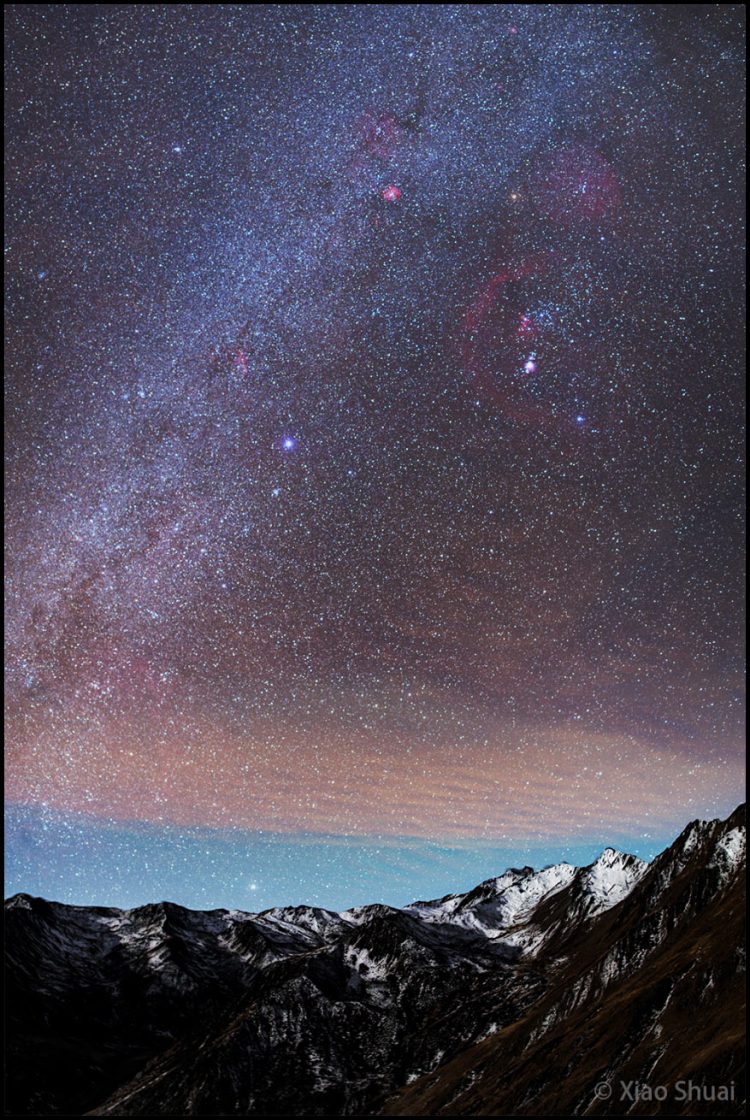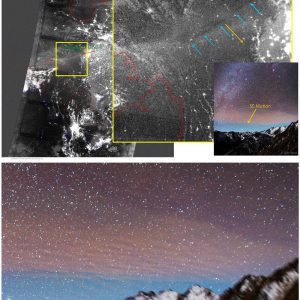A Mesospheric Bore
Description
This interesting image of atmospheric phenomenon called “mesospheric bore” was captured from Mount Balang, Sichuan, China on 2016 November 24 by Xiao Shuai who reported it was seen with naked eye. TWAN-China member Jeff Dai collaborated with the photographer in image processing and collecting information on what exactly is captured. The photo looks to the south and the foreground mountain was illuminated by the rising moon in early morning. Click the second photo for a closer view of the waves. The satellite view of the phenomenon is by Suomi NPP VIIRS Day Night Band.
According to scientist Yue Jia at Hampton University and NASA’s Goddard “the mesospheric bore is sudden brightening or darkening of the nightglow followed by a train of waves, occurring at ~90 km high in the atmosphere. It is associated with the hydraulic jump of the airglow layer. this phenomenon is caused by atmospheric gravity waves trapped inside a temperature inversion layer.” The mesosphere is a layer of Earth’s atmosphere above the stratosphere; it is the realm of sprites, noctilucent clouds (NLCs), and airglow.
Further explained on spaceweather.com “On Nov. 17th, NASA’s AIM spacecraft spotted bright noctilucent clouds forming in the mesosphere above Antarctica. Then, in an apparently unrelated development on Nov. 24th, the normal dome of airglow over China split in two. This is called a mesospheric bore, not because it’s dull. A bore is a type of atmospheric wave with deep ripples at its leading edge. Indeed, you can see the ripples in Shuai’s photo separating the zone of airglow from clear sky. Bores fall into the category of gravity waves. —so called because gravity acts as the restoring force essential to wave motion. Analogy: Boats in water. When a boat goes tearing across a lake, water in front of the boat is pushed upward. Gravity pulls the water back down again and this sets up a wave. In this case, instead of water, rarefied air is the medium through which the wave propagates. The sudden boundary in the airglow layer is probably akin to a hydraulic jump. But what created the disturbance in the first place? (the ‘boat’?) No one knows.”
Further image information:
Location: 30°53’54’’N and 102°54’03E
Time: 2 – 4 a.m. (GMT +8)


comments (0)